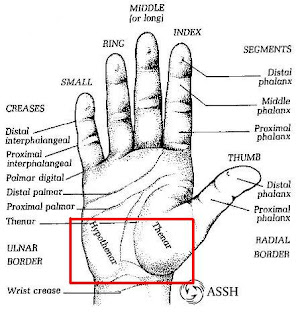After some months away from the blog, I´m back again. As you already know, I have a passion for the sea and navigation. This months I´ve been studying and preparing my exam for becoming the Spanish equivalent to the RYA Yachtmaster Ocean, and I have passed 100% of the subjects I was enrolled in: Metereology, Oceanography, English and Radiocommunications.
Now that I have more time, I can write on the blog again... There we go!
Sometime ago, Ronny Lauten, follower of this blog, read my previous article "Tambourine Technique". As I wrote about a technique suitable for piano passages, Mr. Lauten got in touch with me, wanting to know my approach to loud ones.
Well, when I play forte, I use the same technique. When you want to play intrincate and loud passages, everything explained on that previous article is of application. Re-read it, as it has very detailed information. The only difference beween piano and forte is the velocity of attack. As my students already know, I always relate dynamics and velocity of attack: More speed always means more volume, less speed implies less volume.
On this video, you can see and hear that technique on loud passages:
This technique is very useful for things like "Capriccio Spagnol", "Carmen", "España"... It has many applications and, as it happens with its piano counterpart, it allows for the instrument to be played high, keeping the visual factor.
Many percussionists use the knee technique for these situations. Personally, (not neglecting any other way of playing, as different situations can be better resolved with certain technique instead of other), I prefer to unify criteria and play everything as simple and natural as possible. If I can play an excerpt this way, I prefer it over the knee version, as I can stay seated (read "To sit or not to seat? That is the question") and keep the instrument high.
As you can see, this technique can be used with many passages.
But... What if we need to play agile passages with very generous dynamics ("Trepak" comes to mind)? For this, I use a very similar technique. Our thumb may not be enough for dynamics above forte (quite logical as it´s only one finger), so I use a group of muscles located on the base of the palm named thenar and hypothenar prominences. It will be the red marked part the one replacing our thumb, allowing to play louder:
 |
| © ASSH |
This technique is very similar, but presents slight differences.
Our fingers strike exactly the same: they hit the tambourine in the same way we already know.
 |
© David Valdés
|
The difference is in the way we hit with the palm. Contrary to the way we used the thumb, which striked the instrument, it is the tambourine which produces the stroke: the right hand stays still (very important), being the tambourine with a left hand twist the one producing the stroke:
 |
© David Valdés
|
Obviously, it´s crucial for both types of stroke to be as similar as possible, resulting in a homogeneous sound. The "work load" is for the fingers, and the "extra strokes" are assignated to the base of the palm.
On the following video, you can see the different movements:
I encourage you to practice these techniques for their extraordinary versatility.
These are just a few of the many possibilities the tambourine has to offer. In future articles, I´ll write some more about different techniques for this instrument.
…et in Arcadia ego.
© David Valdés

As usual you post excellent blogs. Keep up the good work!
ReplyDeleteAwesome!! Really excellent stuff! Any chance of showing us the "infamous" Dvorak's Carnival Overture?
ReplyDelete